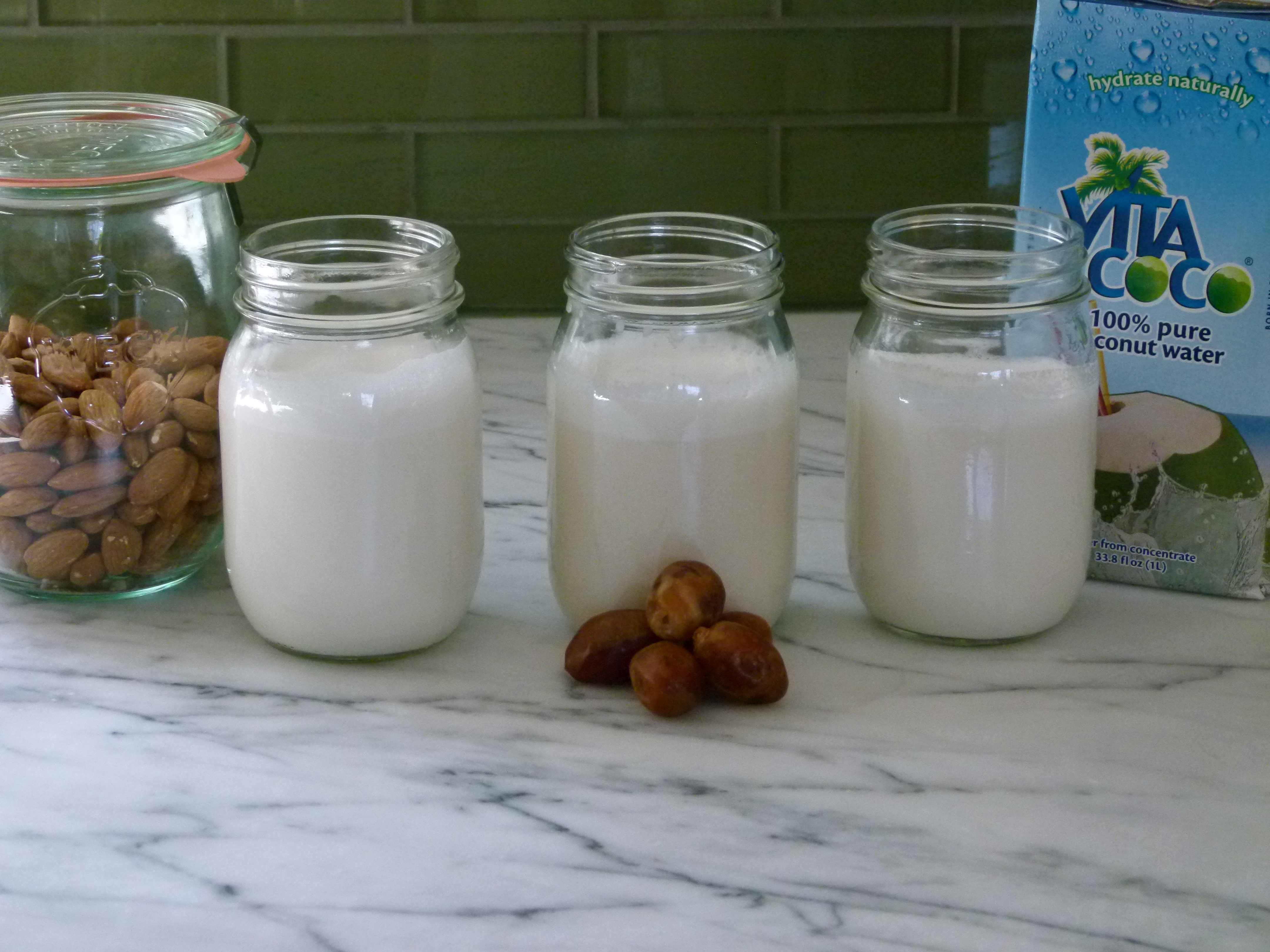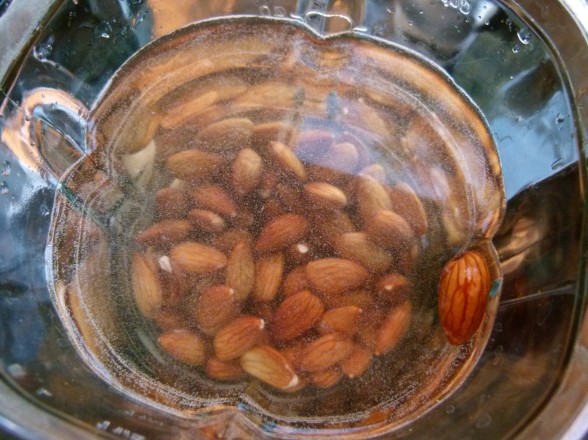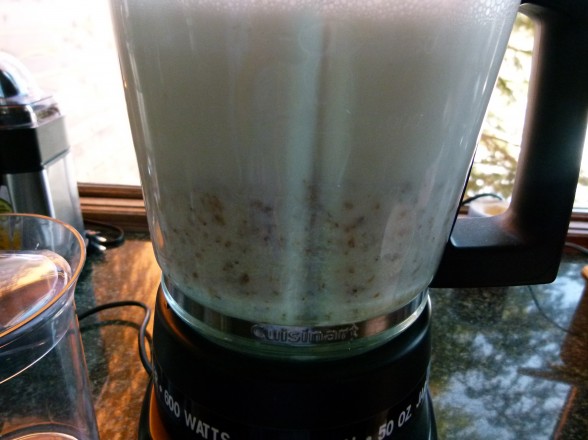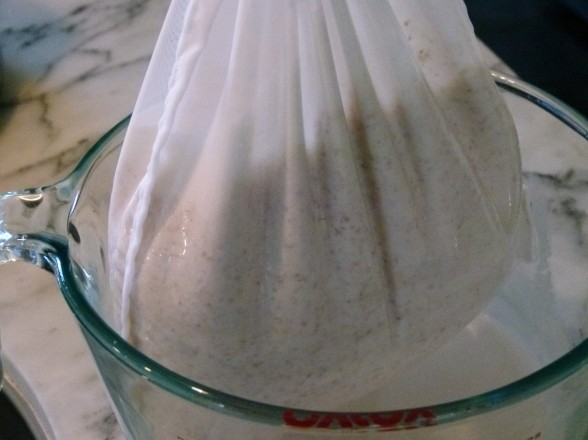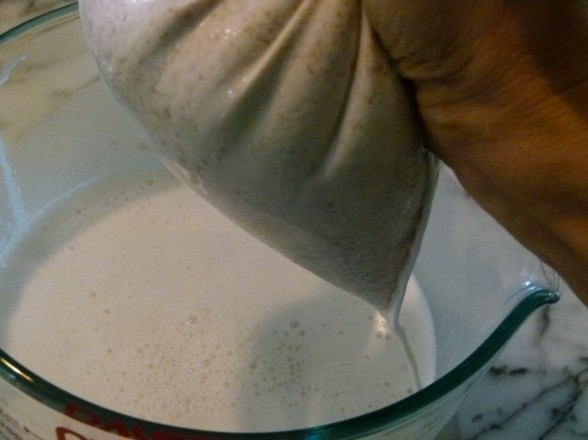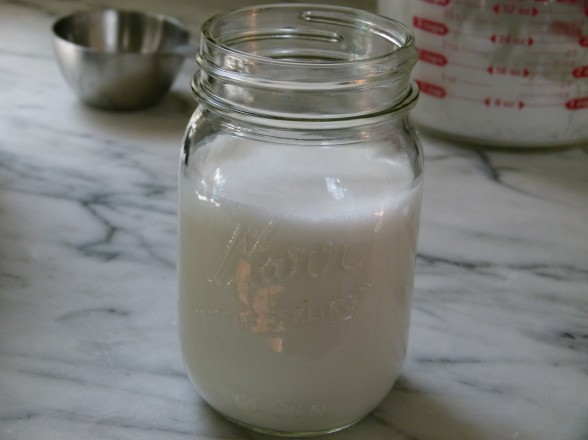Even Easier Homemade Almond Milk Recipe
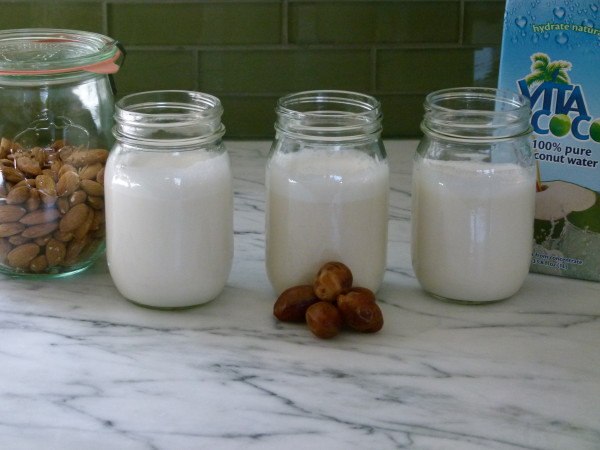
I know I’ve already posted a How-to-Make-Almond-Milk-from-Scratch recipe. In fact, I gave you three different versions! But my how-to involves slipping the skins off the soaked almonds before blitzing them in your blender which is really no big deal. The reason I do that is because I went to an ayurvedic cooking lecture many, many years ago and the teacher went into great detail about almonds. Almonds are wonderful and alkalizing and high in protein and good fats, BUT (I was hanging on the edge of my seat when I heard that “BUT”) they can be very hard to digest unless they are soaked. AND the skins can be a little bitter. AND the skins cause wrinkles. Whaaaaaat???? I will tell you no one was listening until she said that and then every manicured brow in the room went up. “Did she say almond skins cause WRINKLES?”
So obviously do you really think I was going to start eating almond skins after that? Silly question. Duh, noooooo. Of course I never did any research as to the validity of that statement and I still haven’t. But I did research how to make almond milk from other sources and everyone says to slip those skins off, perhaps due more to a bitter aftertaste than the wrinkles theory. But your friend Pamela here has gotten much busier since my last almond milk post and I have become practically dairy-free, so I have been making almond milk about twice a week. And there came a point when I decided that slipping those almond skins off was GIVING me wrinkles! Or maybe because I was doing it while watching Diners, Drive-Ins and Dives. Oy. Anyhoo, I decided to see what would happen if I soaked the almonds, drained them and blended them in fresh water WITH their supposedly bitter, age-advancing skins. Gasp. No difference. Same delicious taste and my skin still looks like it did before I drank the almond milk. Life-changing moment!
I also now exclusively use a nut milk bag (I know, sounds nasty, but totally fabulous!) instead of my fine mesh sieve to squeeze out every last drop from the blended almonds. If you don’t have a nut milk bag (gives me the willies every time I type that, but a great product, really!), a fine mesh sieve works great. You just really want to press down on the pureed almonds or squeeze them with your hands as I am convinced that the creamiest part of the almond milk comes from that last squeeze.
I use almond milk all the time, especially to finish off hot breakfast porridges like oats and millet. I use it in acai bowls and smoothies, as well as chia seed pudding and desserts. The girls have been using it over granola and my friend Matt pours it over cereal and in coffee. Just remember, homemade almond milk is pure goodness with no preservatives so it doesn’t last as long as the stuff in a box. What else do you use almond milk for?
- Soak 1 cup raw almonds in bowl with plenty of room temperature water for 6-8 hours. (Soaking will make the almonds softer and more digestible.)
- Drain the almonds in a colander and rinse with fresh water.
- Place the almonds in a blender or Vitamix. Add 3 cups fresh water and blend until the nuts are pulverized.
- Strain through a fine mesh sieve, cheesecloth or a nut milk bag into a glass bowl. If using a sieve, use a spoon to scrape the almond meal around and allow as much liquid to drain through.
- Transfer to a glass jar and refrigerate, covered for up to 4 days. Add the remaining pulp, sweetened with honey or maple syrup, to hot cereal, granola or fruit.
Soak almonds in regular water, but use coconut water to blend with the soaked almonds.
Almond milk sweetened with dates:
Follow directions for basic almond milk, but blend soaked almonds with water and 8 pitted dates. You can add a drop of vanilla and sea salt, if you like, but it is delicious just like this. Of course you can sweeten almond milk with stevia or honey or whatever you like, but I think dates are the best! You don’t need to sweeten the remaining pulp if you choose to eat it since it is already sweet from the dates.


